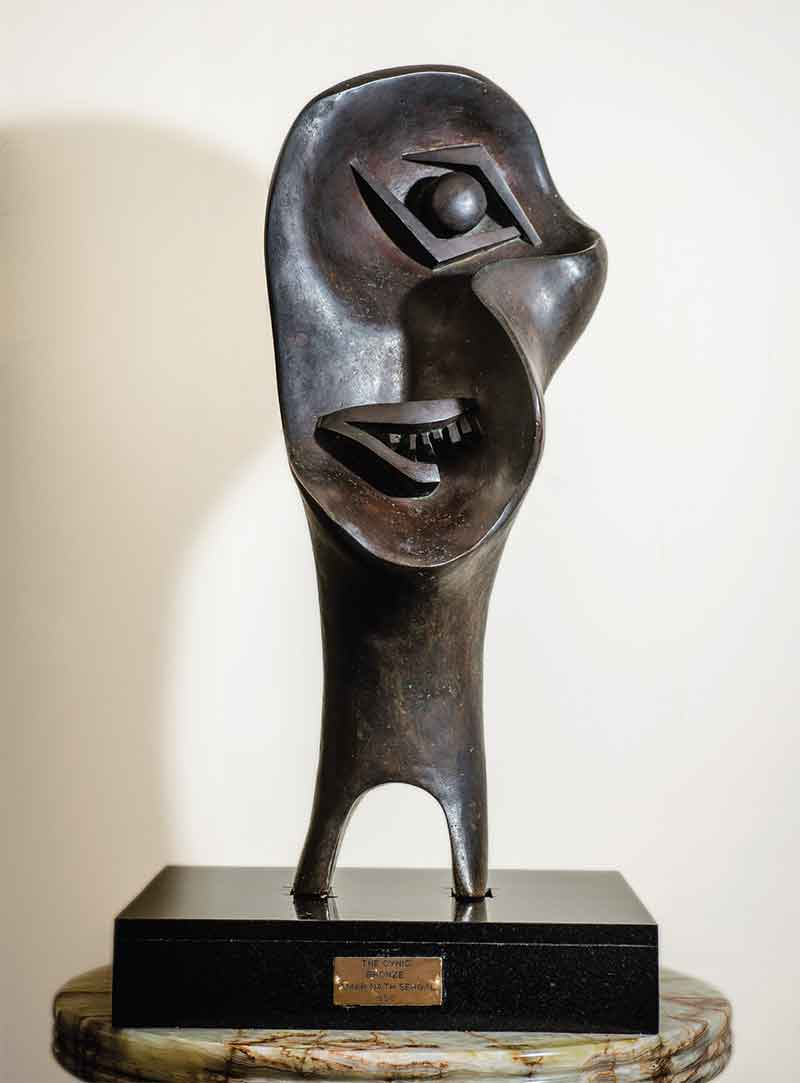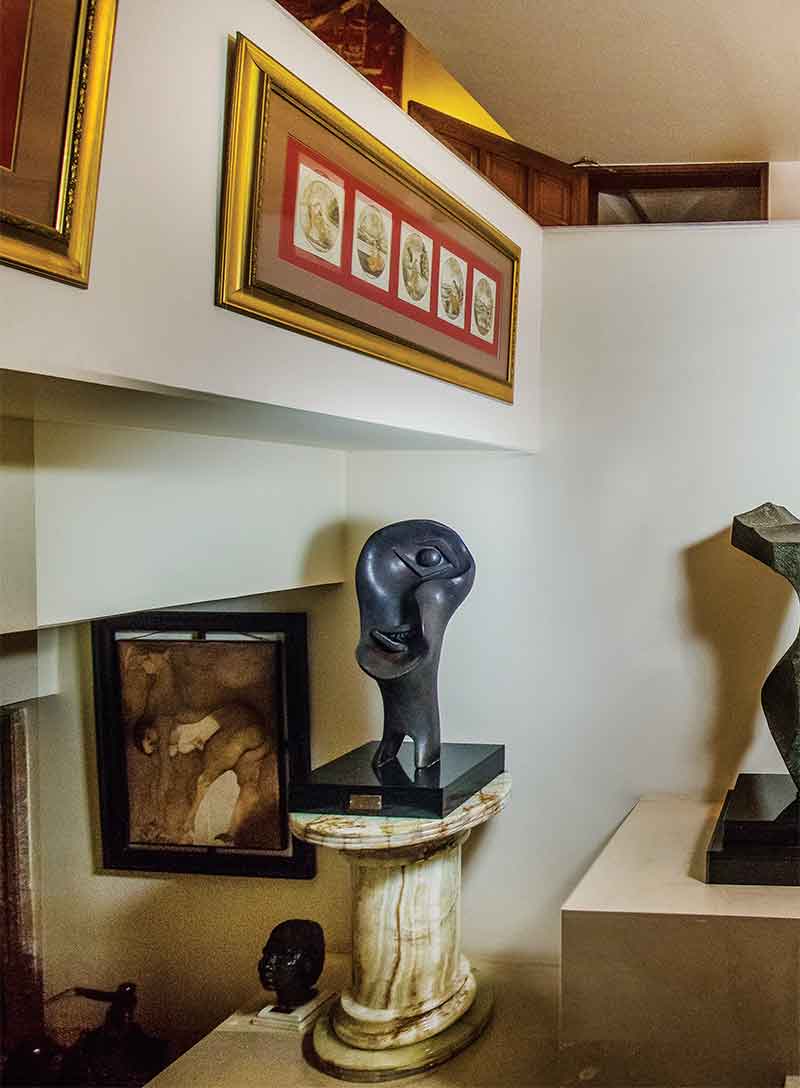
Private Collection, New Delhi
The Cynic
Bronze, 1990
Sehgal’s works serve an aesthetic purpose, as art is meant to, but also communicate feelings through honest expression. Sehgal explored the concept of heads and faces. they are distorted, broken, and reassembled as reflections of portraits, exuding a range of human emotions. Another work worth noting, his One Eyed King, has a similar amalgamation of harmony and despair. the face on the sculpture takes over the narrative of the bronze sculpture, like The Cynic. The cubist style imposes sympathy for its representation of a lost man, or worse, one taken for granted. he explores with finesse a dialogue between the self and the ego, completely letting his guard down.
The late 1950s and early ’60s gave birth to some of Sehgal’s most iconic pieces, referred to as his most introspective epoch. The Cynic made its debut in europe as part of a one-man show in 1964 at Paulskirche, Frankfurt, germany, a precursor to his next and maybe most important show—a solo exhibition at museé National d’Art moderne, Paris, in 1965. The Cynic then travelled to haus am lützowplatz in Berlin and continued its way to a plethora of one-man exhibitions—the Sculpture rodin museum in Paris, the Cultural Centrum in ghent, the museé D’historie et D’Art in luxembourg, and the Wiener Secession in Austria, in 1966. In the winter of 1967, Amar Nath Sehgal exhibited at galerie Brassau in luxembourg, followed by the Flemish Academy of Fine Arts in Antwerp, Belgium.
– Mandira Row, Seeking Catharsis in Sculpture, DAG Iconic II


